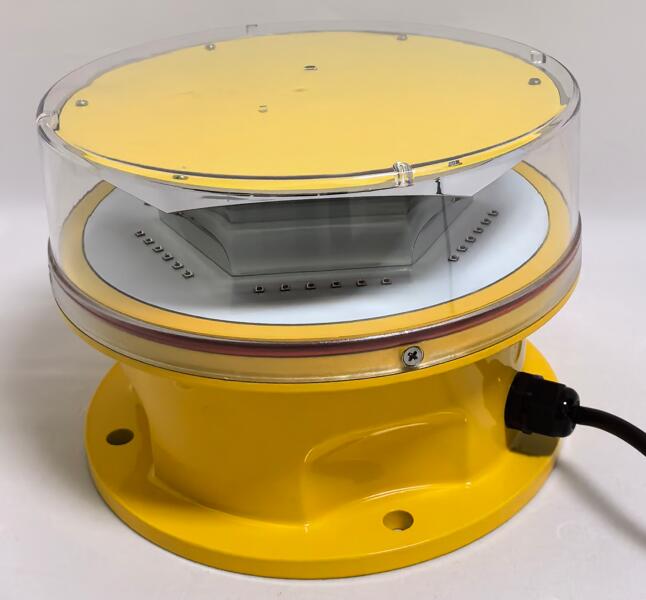L 864 Obstruction Light: The Gold Standard in Aviation Safety Lighting
In the realm of aviation safety, precision and reliability are non-negotiable. Among the myriad of solutions designed to protect aircraft and their passengers, the L 864 obstruction light stands out as a benchmark for excellence. Recognized globally for its compliance with stringent aviation standards, this lighting system plays a critical role in marking tall structures and ensuring safe air navigation. This article delves into the features, applications, and significance of the L 864 obstruction light, highlighting why it is the gold standard in aviation safety lighting.
What is the L 864 Obstruction Light?
The L 864 obstruction light is a high-intensity lighting system specifically designed to mark obstacles that could pose a risk to air navigation. It complies with the Federal Aviation Administration (FAA) and International Civil Aviation Organization (ICAO) standards, ensuring its suitability for use on structures such as communication towers, wind turbines, skyscrapers, and other tall edifices. The "L 864" designation refers to the specific FAA standard that governs its performance, including light intensity, color, and flash characteristics.
Key Features of the L 864 Obstruction Light
High-Intensity White Strobe: The L 864 obstruction light emits a powerful white strobe that is visible from great distances, even in daylight. This makes it ideal for marking tall structures that could otherwise blend into the background.
Durability and Reliability: Built to withstand harsh environmental conditions, the L 864 obstruction light is resistant to extreme temperatures, heavy rain, snow, and high winds. Its robust construction ensures consistent performance over long periods.

Energy Efficiency: Many modern L 864 obstruction lights utilize LED technology, which consumes less power than traditional lighting systems while delivering superior brightness. This reduces operational costs and environmental impact.
Compliance with Aviation Standards: The L 864 obstruction light meets or exceeds the requirements set by the FAA and ICAO, ensuring its suitability for use in both domestic and international airspace.
| L 864 obstruction lights |
Customizable Flash Patterns: The light can be programmed with different flash patterns to meet specific regulatory requirements or operational needs, enhancing its versatility.
Applications of the L 864 Obstruction Light
The L 864 obstruction light is widely used in various industries and settings, including:
| L 864 obstruction light |
Telecommunication Towers: These towers, often located in remote or elevated areas, require reliable lighting to ensure they are visible to pilots. The L 864 obstruction light is a popular choice for this purpose due to its high intensity and durability.
Wind Farms: As wind turbines continue to grow in height, marking them for aviation safety becomes increasingly important. The L 864 obstruction light is commonly used to illuminate wind turbines, reducing the risk of collisions.
Urban Skyscrapers: In densely populated urban areas, tall buildings can pose a significant hazard to low-flying aircraft. The L 864 obstruction light is installed on rooftops to mark these structures, enhancing safety without disrupting the cityscape.
Airports and Helipads: The L 864 obstruction light is also used to mark runways, taxiways, and helipads, providing clear guidance to pilots during takeoff, landing, and navigation.
Natural Obstacles: In some cases, natural formations such as mountains or cliffs may require obstruction lighting. The L 864 obstruction light is well-suited for these applications due to its high visibility and reliability.
Advantages of the L 864 Obstruction Light
The L 864 obstruction light offers several advantages that make it a preferred choice for aviation safety:
Enhanced Safety: Its high-intensity strobe ensures that obstacles are clearly visible to pilots, reducing the risk of collisions and enhancing overall air safety.
Regulatory Compliance: By adhering to FAA and ICAO standards, the L 864 obstruction light provides peace of mind to operators and regulators alike.
Low Maintenance: The use of LED technology and durable materials minimizes the need for frequent maintenance, reducing operational costs and downtime.
Environmental Benefits: Energy-efficient LEDs and long-lasting components contribute to a smaller carbon footprint, aligning with global sustainability goals.
Versatility: The L 864 obstruction light can be customized to meet the specific needs of different applications, making it a versatile solution for a wide range of industries.
Challenges and Innovations
While the L 864 obstruction light is a highly effective solution, it is not without challenges. For instance, the high-intensity strobe can contribute to light pollution, which may affect nearby communities or wildlife. To address this, manufacturers are developing lights with adjustable intensity and directional focus, minimizing spillover and glare.
Additionally, advancements in solar technology are being integrated into the L 864 obstruction light, offering a renewable energy alternative for off-grid or remote locations. These solar-powered systems are not only environmentally friendly but also cost-effective in the long run.
The Future of the L 864 Obstruction Light
As the aviation industry continues to evolve, so too will the L 864 obstruction light. Innovations such as smart lighting systems, which use sensors and AI to optimize performance, are on the horizon. These systems could automatically adjust brightness based on weather conditions or aircraft proximity, further enhancing safety and efficiency.
Moreover, the integration of IoT (Internet of Things) technology could enable real-time monitoring and diagnostics, allowing operators to address issues proactively and reduce downtime. These advancements will ensure that the L 864 obstruction light remains at the forefront of aviation safety lighting for years to come.
The L 864 obstruction light is more than just a lighting system; it is a critical component of modern aviation safety. Its high-intensity strobe, durability, and compliance with international standards make it an indispensable tool for marking obstacles and protecting aircraft. As technology continues to advance, the L 864 obstruction light will evolve, offering even greater safety, efficiency, and sustainability. For industries and operators committed to safeguarding the skies, the L 864 obstruction light is the gold standard in aviation safety lighting.
